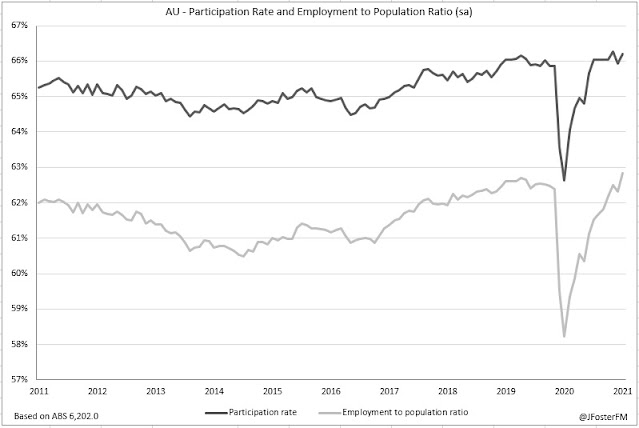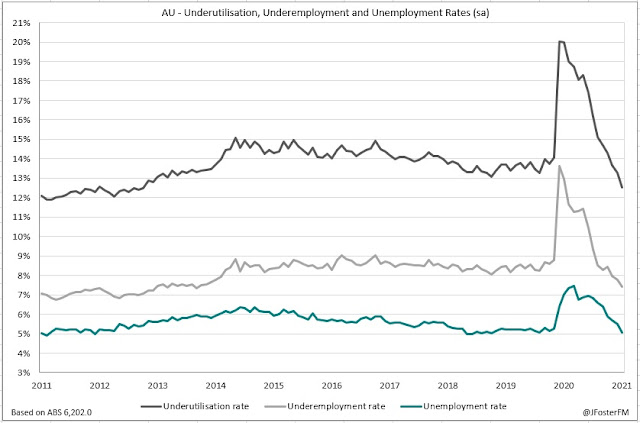Australia's labour force survey for May is scheduled for release by the ABS at 11:30am (AEST) this morning. Progress in the recovery was disrupted by the Easter and school holiday period as employment declined by 30.6k in April and hours worked fell sharply. Conditions are expected to have rebounded in May with job vacancies remaining elevated, though the recent expiry of JobKeeper appears to be having a noticeable impact in some of the industries that relied more heavily on the wage subsidy.
As it stands | Labour Force Survey
Employment contracted by a net 30.6k in April for its first monthly decline since September. Markets had expected employment to slow to a rise of 20.0k in anticipation of some effect from the expiry of the JobKeeper wage subsidy. In the event, seasonality due to Easter and school holidays coinciding with the reference period of the survey look to have been a key factor behind the weak outcome.
Part-time employment saw its weakest month since the national lockdown falling by 64.4k in April. This was partially offset by a 33.8k rise in full-time employment. After April's net 30.6k fall, total employment was 0.4% above its pre-pandemic level. Both part-time (0.5%) and full-time employment (0.3%) had recovered to be a little higher their levels prior to the onset of COVID.
A material decline in labour force participation from 66.3% to 66.0% appeared consistent with seasonal effects. With the decline in participation (-64.2k) being larger than the fall in employment (-30.6k), the unemployment rate was lowered from 5.7% to 5.5% (vs 5.6% expected), though it remains above its pre-pandemic level of 5.3%. Underutilisation in the labour force also declined in the month (13.3% from 13.7%) as did the underemployment rate (7.8% from 8.0%), with both measures below pre-pandemic levels.
Associated with the Easter and school holiday period was a sizeable 0.7% fall in hours worked in April. The ABS reported that a very large number of workers (around 3.462m) either worked fewer hours than usual or zero hours in April due to holidays, annual leave or other entitlements. This was a similar number to April 2018 when Easter last fell within the reference period of the survey. Those working zero hours due to economic reasons was little changed in April (58.9k), pointing to muted initial impact from the expiry of JobKeeper.
Market Expectations | Labour Force Survey
With the holiday period out of the way, employment is forecast to rebound by 30.0k in May, with the range of estimates sitting between -19.0k and 45.0k. However, there continues to be uncertainty around the expiry of JobKeeper given that the transitional effects are likely to take some time to play out. Highlighting the point, the ABS's high-frequency payrolls data shows that there have been varying outcomes in the industries that had the largest take-up of the wage subsidy since its expiry. Meanwhile, headline unemployment is expected to remain steady at 5.5% (range: 5.4% to 5.7%), though much is going to depend on whether there is a rebound in participation in May.
What to watch | Labour Force Survey
The key question ahead of today's release is whether April's weakness is confirmed as temporary due to Easter holidays or if another soft print comes through that would point the impact of the JobKeeper expiry. A rebound in conditions appears more likely, though on the other hand, the ABS payrolls index is only up slightly over the month, so there are risks on either side of consensus expectations on the employment number.

































